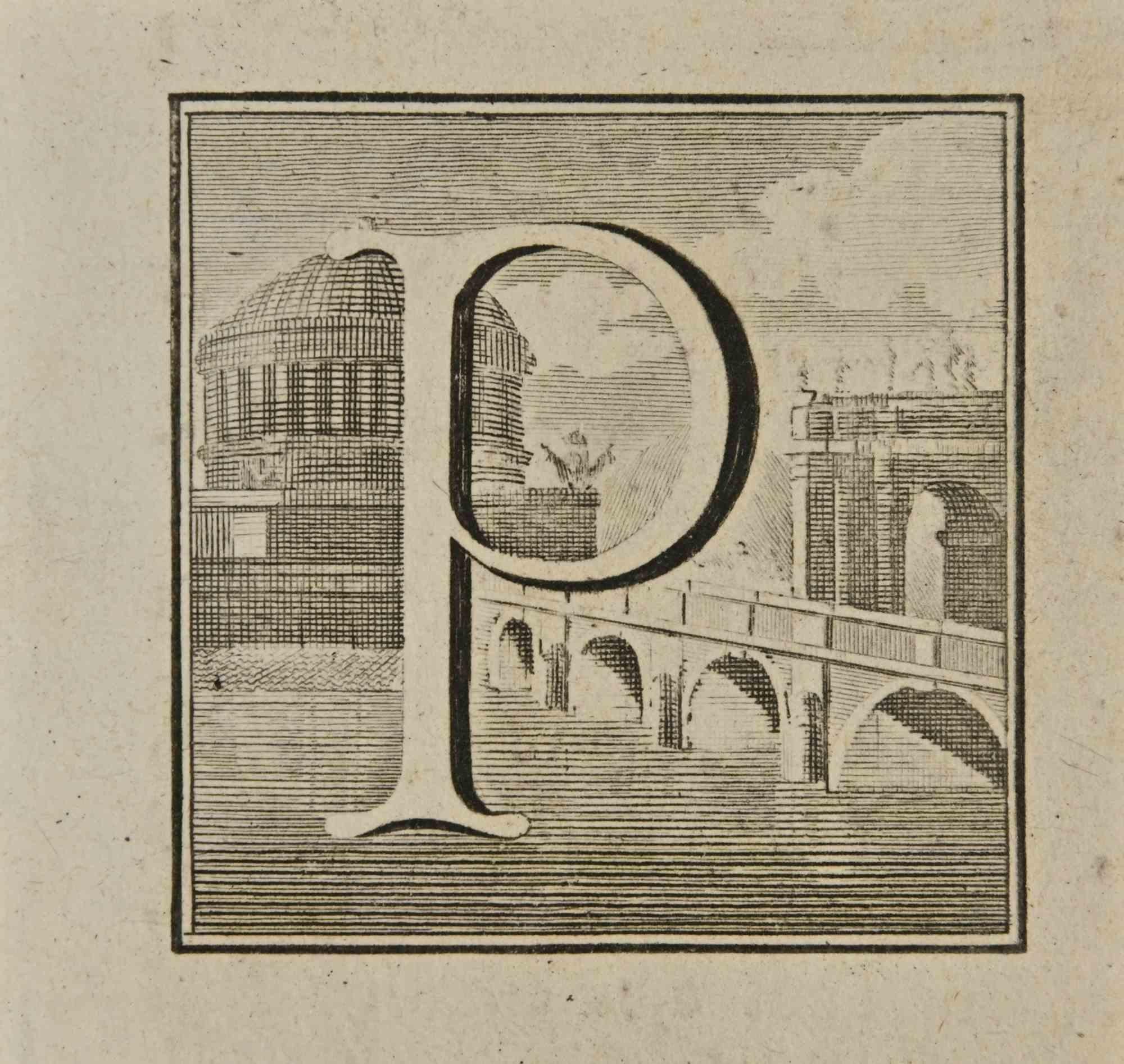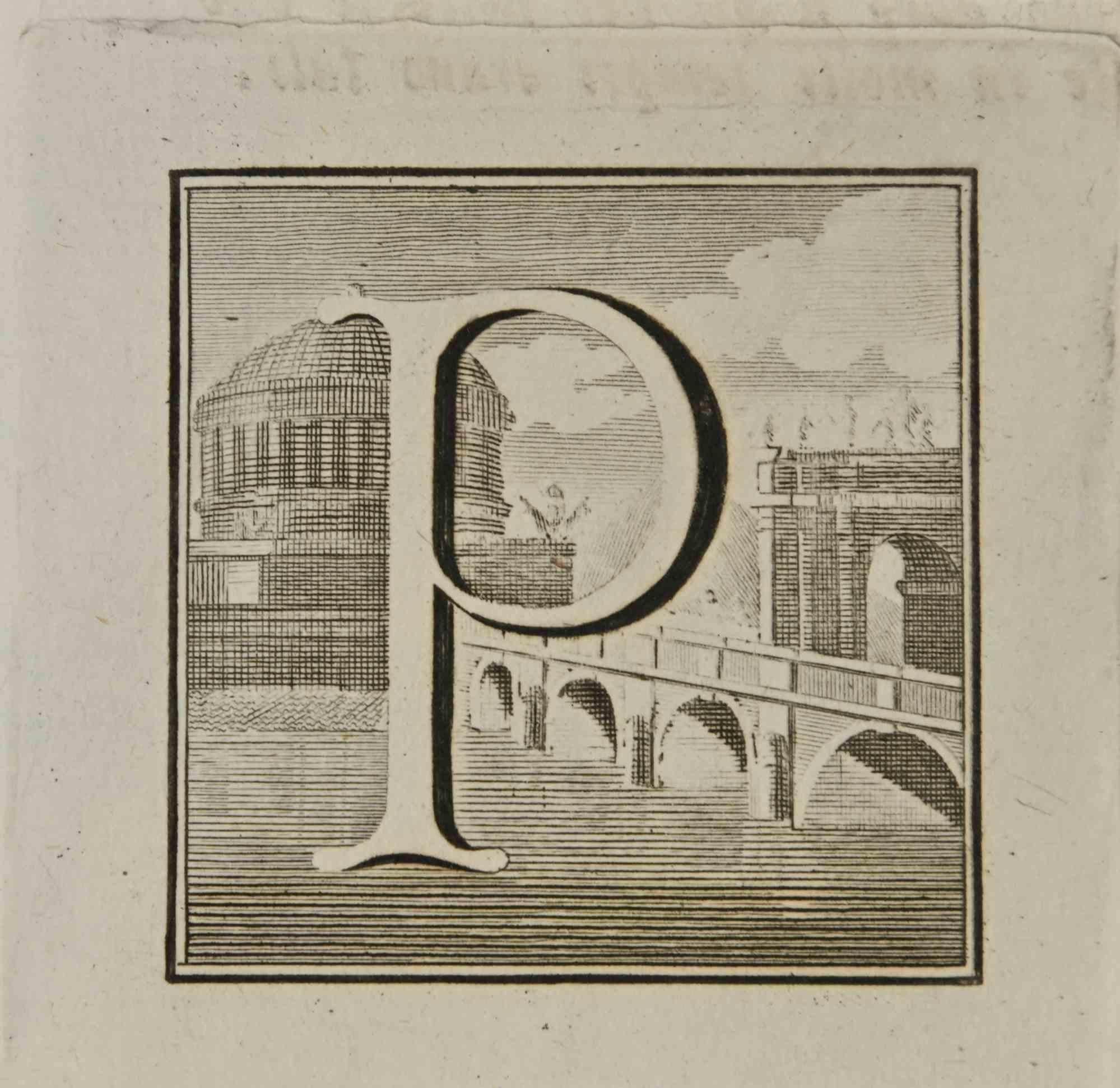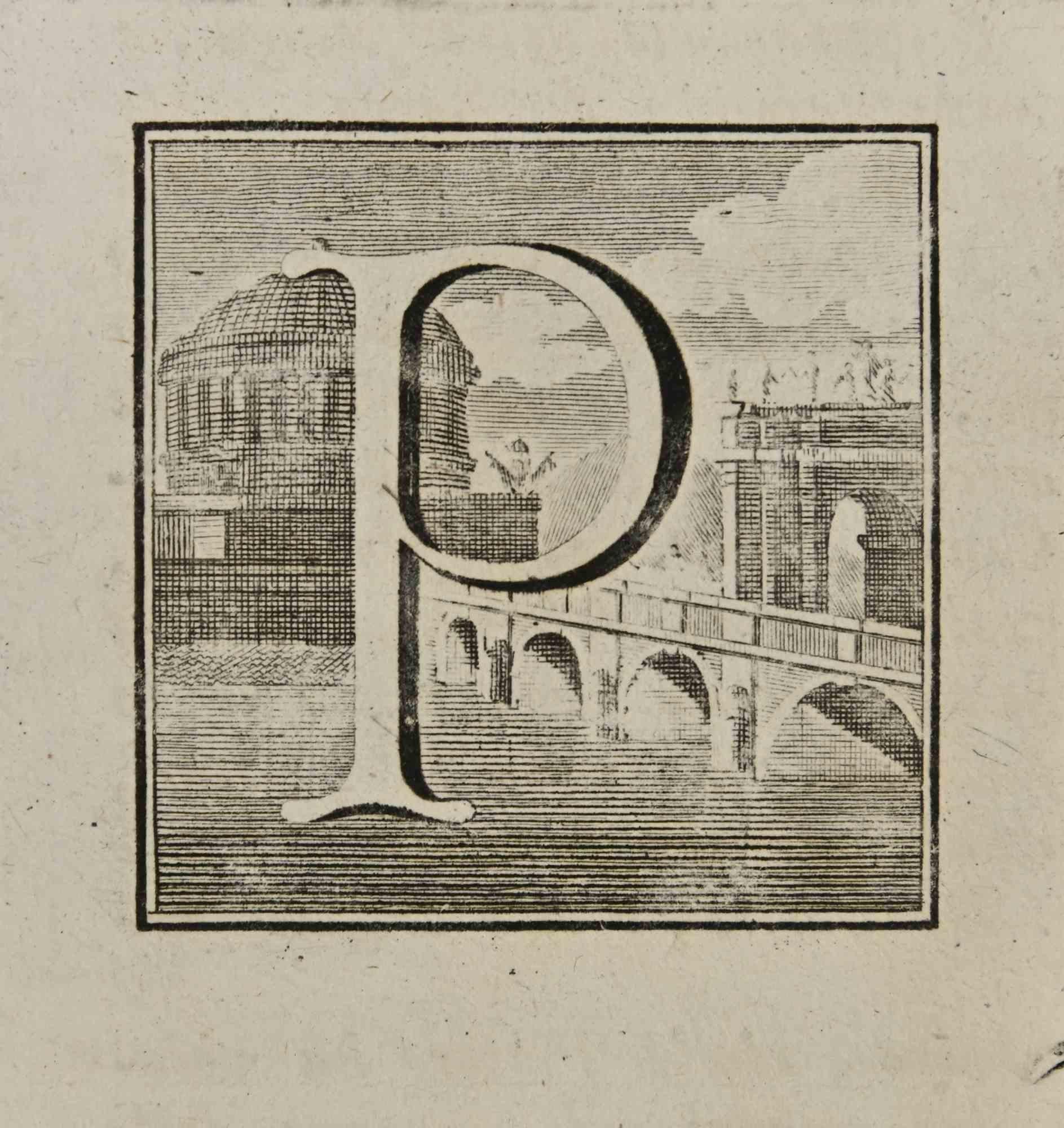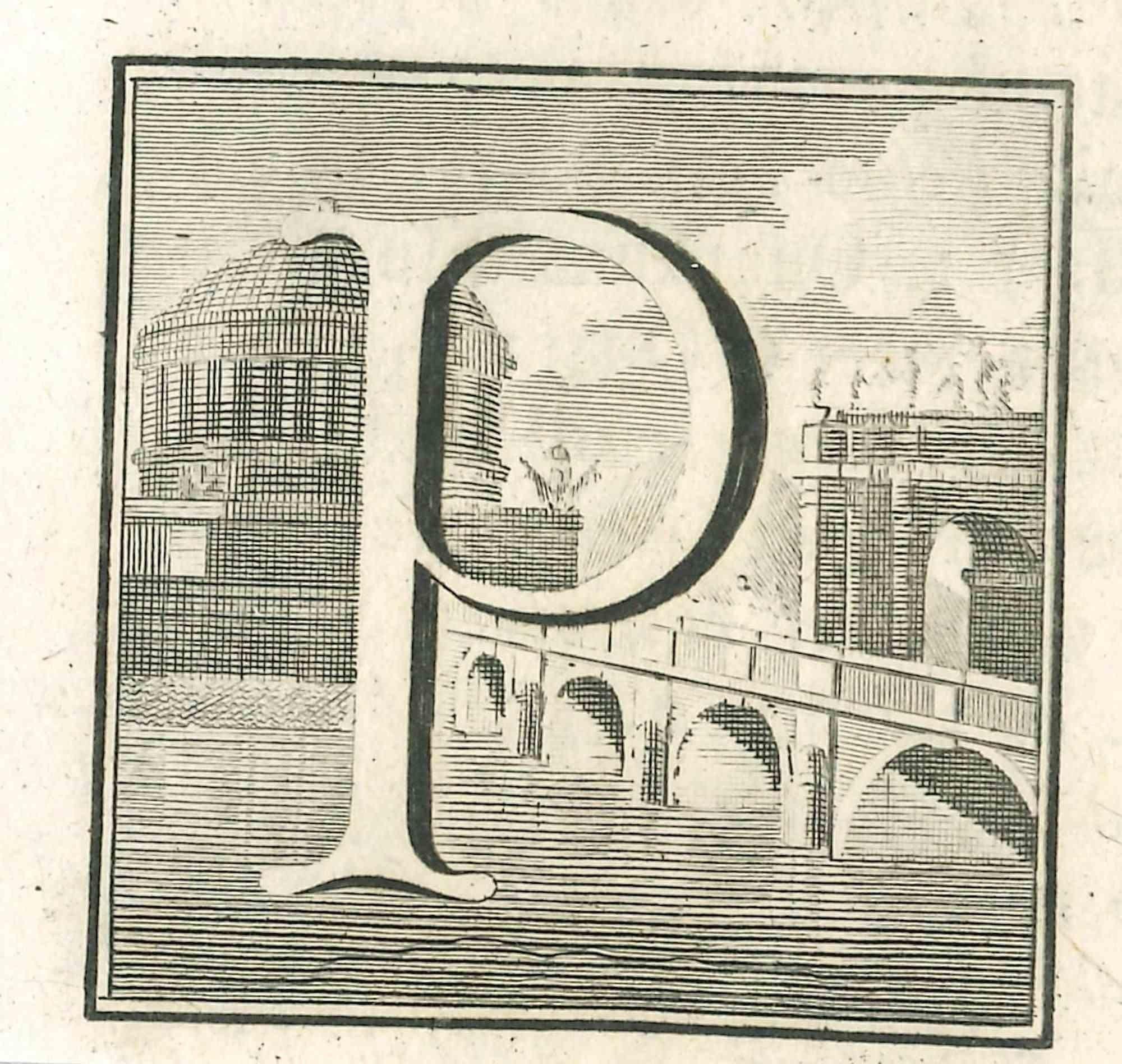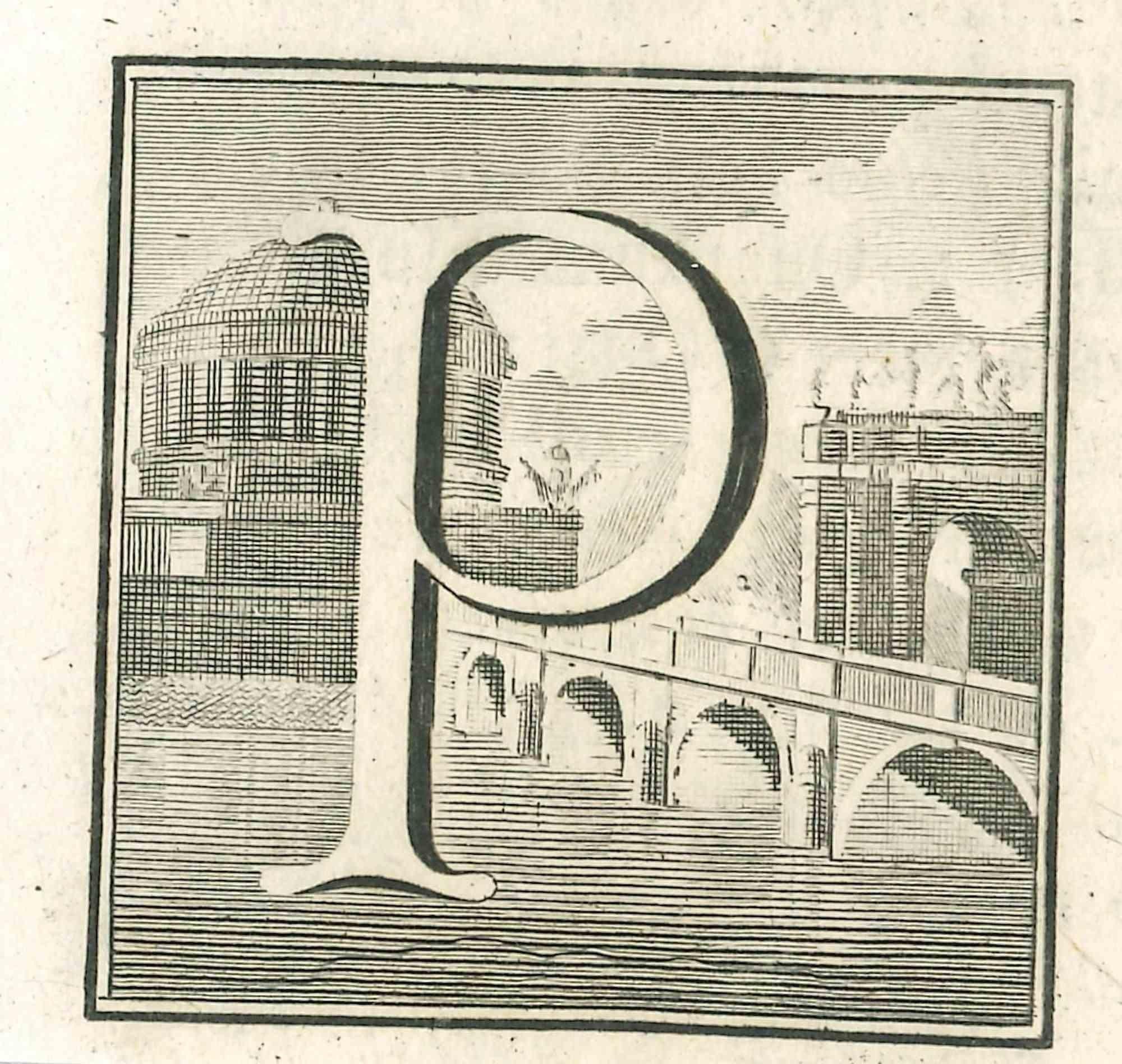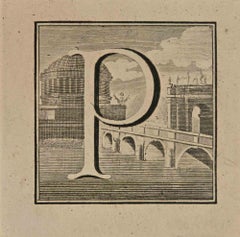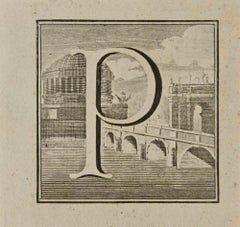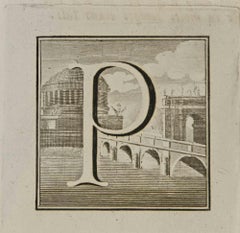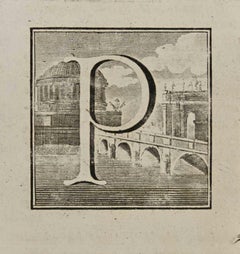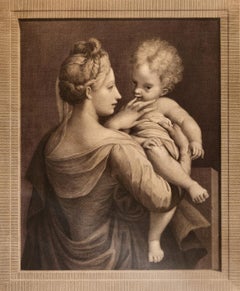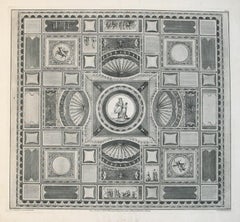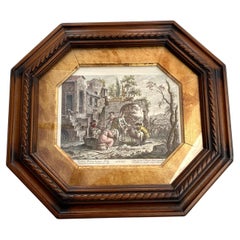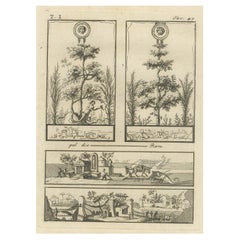Items Similar to Letter of the Alphabet P - Etching by Luigi Vanvitelli - 18th Century
Want more images or videos?
Request additional images or videos from the seller
1 of 2
Luigi VanvitelliLetter of the Alphabet P - Etching by Luigi Vanvitelli - 18th CenturyLate 18th Century
Late 18th Century
$239.34
£177.79
€200
CA$330.19
A$362.97
CHF 190.76
MX$4,407.73
NOK 2,379.66
SEK 2,254.56
DKK 1,522.50
About the Item
Letter of the Alphabet P from the series "Antiquities of Herculaneum", is an etching on paper realized by Luigi Vanvitelli in the 18th century.
Good conditions.
The etching belongs to the print suite “Antiquities of Herculaneum Exposed” (original title: “Le Antichità di Ercolano Esposte”), an eight-volume volume of engravings of the finds from the excavation of the ruins of Herculaneum in the Kingdom of Naples (now Campania, Italy). It was published between 1757 and 1792 by the Regia Stamperia, and copies were delivered to selected recipients across Europe.
Despite the title, the Antiquity of Herculaneum shows objects from all the excavations undertaken by the Bourbons in the Gulf of Naples. These include Pompeii, Stabia and two sites of Herculaneum: Resina and Portici.
The Bourbon King Carlo appointed fifteen scholars creating a new “Herculaneum Academy” to study the artifacts and publish the results of the archaeological excavations of the sites.
- Creator:Luigi Vanvitelli
- Creation Year:Late 18th Century
- Dimensions:Height: 3.55 in (9 cm)Width: 2.76 in (7 cm)Depth: 0.08 in (2 mm)
- Medium:
- Movement & Style:
- Period:
- Framing:Framing Options Available
- Condition:Insurance may be requested by customers as additional service, contact us for more information.
- Gallery Location:Roma, IT
- Reference Number:Seller: T-1355971stDibs: LU650311305592
About the Seller
4.9
Platinum Seller
Premium sellers with a 4.7+ rating and 24-hour response times
1stDibs seller since 2017
7,707 sales on 1stDibs
Typical response time: 2 hours
- ShippingRetrieving quote...Shipping from: Monaco, Monaco
- Return Policy
Authenticity Guarantee
In the unlikely event there’s an issue with an item’s authenticity, contact us within 1 year for a full refund. DetailsMoney-Back Guarantee
If your item is not as described, is damaged in transit, or does not arrive, contact us within 7 days for a full refund. Details24-Hour Cancellation
You have a 24-hour grace period in which to reconsider your purchase, with no questions asked.Vetted Professional Sellers
Our world-class sellers must adhere to strict standards for service and quality, maintaining the integrity of our listings.Price-Match Guarantee
If you find that a seller listed the same item for a lower price elsewhere, we’ll match it.Trusted Global Delivery
Our best-in-class carrier network provides specialized shipping options worldwide, including custom delivery.More From This Seller
View AllLetter of the Alphabet P - Etching by Luigi Vanvitelli - 18th Century
Located in Roma, IT
Letter of the Alphabet P, from the series "Antiquities of Herculaneum", is an etching on paper realized by Luigi Vanvitelli in the 18th century.
Good conditions.
The etching belon...
Category
Late 18th Century Old Masters Figurative Prints
Materials
Etching
Letter of the Alphabet P - Etching by Luigi Vanvitelli - 18th Century
Located in Roma, IT
Letter of the Alphabet P, from the series "Antiquities of Herculaneum", is an etching on paper realized by Luigi Vanvitelli in the 18th century.
Good conditions.
The etching belon...
Category
Late 18th Century Old Masters Figurative Prints
Materials
Etching
Letter of the Alphabet P - Etching by Luigi Vanvitelli - 18th Century
Located in Roma, IT
Letter of the Alphabet P, from the series "Antiquities of Herculaneum", is an etching on paper realized by Luigi Vanvitelli in the 18th century.
Good conditions.
The etching belon...
Category
Late 18th Century Old Masters Figurative Prints
Materials
Etching
Letter of the Alphabet P - Etching by Luigi Vanvitelli - 18th Century
Located in Roma, IT
Letter of the Alphabet P, from the series "Antiquities of Herculaneum", is an etching on paper realized by Luigi Vanvitelli in the 18th century.
Good conditions.
The etching belon...
Category
Late 18th Century Old Masters Figurative Prints
Materials
Etching
Letter of the Alphabet P - Etching by Luigi Vanvitelli - 18th Century
Located in Roma, IT
Letter of the Alphabet P, from the series "Antiquities of Herculaneum", is an etching on paper realized by Luigi Vanvitelli in the 18th century.
Good conditions.
The etching belon...
Category
Late 18th Century Old Masters Figurative Prints
Materials
Etching
Letter of the Alphabet P - Etching by Luigi Vanvitelli - 18th Century
Located in Roma, IT
Letter of the Alphabet P, from the series "Antiquities of Herculaneum", is an etching on paper realized by Luigi Vanvitelli in the 18th century.
Good conditions with slight folding...
Category
Late 18th Century Old Masters Figurative Prints
Materials
Etching
You May Also Like
Parmigiani Amica: An 18th Century Engraving and Etching by Strange After Mazzola
Located in Alamo, CA
This is an 18th century engraving and etching entitled "Parmigiani Amica" by Robert Strange after a painting by Girolamo Francesco Maria Mazzola, better known as Parmigianino, who lived during the Renaissance period. It was published in London in 1774. As the inscription states, the painting was in the collection of the King of Naples at the time the engraving was made. The engraving depicts a half-length portrait of a young woman, known as Parmigiani's Amica (meaning "female friend" in Italian). She is depicted wearing a simple but elegant dress with a low-cut neckline, which reveals her delicate features and graceful neck. Her hair is arranged in a simple yet stylish manner. She is turning to the right to look lovingly at her infant, which she is holding with her right arm. She is touching the baby's mouth with her left hand. The background of the engraving is plain and unadorned, allowing the viewer to focus entirely on the subject of the portrait. The result is a beautiful and timeless image that captures the essence of Renaissance portraiture.
The engraving is printed on watermarked paper. The sheet measures 16.25" high and 12' wide. The sheet is adhered to paper in its upper corners and it has been removed from the paper in its lower corners. There is some mild discoloration and some wrinkling in the margins, including the lower inscription area, and a small dark spot in the upper margin, which may represent a drop of ink occuring at the time of printing. These issues do not involve the image, which is in very good condition. The print is held by several museums and institutions, including: The Metropolitan Museum of Art in New York, The British Museum in London, The Royal Museums of the UK, The British National Trust...
Category
Late 18th Century Portrait Prints
Materials
Engraving, Etching
Presse Ludovico Mirri Mercante d’Quadri incentro al Palazzo Bernini a Roma No.42
By Marco Carloni
Located in Paonia, CO
Presse Ludovico Mirri Mercante d’Quadri incontro al Palazzo Bernini a Roma No.42 is from a series of original engravings published by Lodovico Mirri in the late 18th century and engr...
Category
Late 18th Century Figurative Prints
Materials
Engraving
Antique Reproduced Litography of Giuseppe Zocchi «Aprile», Early 20th Century
Located in Bastogne, BE
Antique reprint of the first half of the 20th century, engraved reproduction depicting a famous drawing by Giuseppe Zocchi represents the composition o...
Category
Vintage 1930s French Drawings
Materials
Wood, Paper
Roman Decorative Motifs and Architectural Scenes by Tommaso Piroli, 1789
Located in Langweer, NL
Roman Decorative Motifs and Architectural Scenes by Tommaso Piroli, 1789
This finely executed copperplate engraving by Tommaso Piroli (1750–1824) is part of his renowned series 'A...
Category
Antique 1780s Prints
Materials
Paper
Old Master French Noblemen Engraving by Crispin de Passe
By Crispin De Passe
Located in New York, NY
Crispin van de Passe The Younger (c. 1594-1670)
Untitled (French Noblemen on Horseback), c. 1620-1660
Engraving
Sight: 11 3/4 x 15 3/4 in.
Framed: 18 3/4 x 22 5/8 in.
Inscribed in p...
Category
17th Century Old Masters Portrait Prints
Materials
Engraving
Study for a Frontispiece, a baroque drawing by Giovanni Antonio Pellegrini
By Giovanni Antonio Pellegrini
Located in PARIS, FR
This masterly frontispiece study, executed with a very sure hand, testifies to the survival of the great Baroque taste in 18th century Venice. It could be one of the very last works by Giovanni Antonio Pellegrini: the few lines that cross the papal arms evoke those of Benedict XIV, who became pope in 1740, one year before the artist's death.
1. Giovanni Antonio Pellegrini and the European influence of Venetian history painting in the 18th century
Giovanni Antonio Pellegrini was born in Venice in 1675 and trained in the studio of the Milanese painter Paolo Pagani (1655 - 1716). Pagani, who had been living in Venice since 1667, took him to Moravia and Vienna from 1690 to 1696. After a stay in Rome from 1699 to 1701, Pellegrini married Angiola Carriera in 1704, the sister of the great pastelist Rosalba Carriera.
From 1708 onwards, Pellegrini left Venice and began an extensive tour of Europe: he worked in England between 1708 and 1713, where he met great success, particularly at Kimbolton Castle and Castle Howard. He then worked in Germany and the Netherlands, then in Bohemia and Austria, before returning briefly to England in 1719. In 1720 he was in Paris where he decorated the ceilings of the Royal Bank for John Law...
Category
1740s Old Masters Figurative Drawings and Watercolors
Materials
Ink
More Ways To Browse
Shio Kusaka
Signed Goya
Suite De 180 Dessins De Picasso
The 19th Century Trash Can
Tom Wesselmann Signed
Tool Posters
Vintage Cardinal Print
70s Pop Art
Aaron Douglas
Alfons Mucha
American Brilliant Cut Glass Plate
Andy Warhol Announcement Card
Antique Manga
Antique Poupee
Antique Star Chart
Burt Lancaster
Chagall 1967
Chagall Lion

